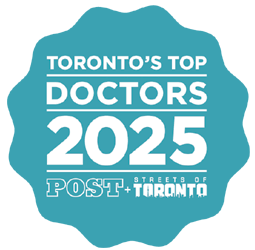Physicians lack breast reconstruction information
Info gap prevents postmastectomy patients from getting procedure
Medical Post: By Jenny Manzer
TORONTO – Gaps in physician knowledge may be keeping some postmastectomy patients from accessing breast reconstruction, a University of Toronto study suggests.
Dr. Kyle Wanzel, a plastic surgery resident, and Dr. Mitchell Brown, a plastic, reconstructive and cosmetic surgeon, based their findings on a survey returned by 383 Ontario physicians, supplemented by focus groups and individual interviews.
The team asked referring physicians – including oncologists, general surgeons and family physicians – about their knowledge and attitudes toward breast reconstructive surgery. They also surveyed plastic surgeons.
Responders included 105 plastic surgeons, 96 oncologists, 98 general surgeons and 84 primary care physicians.
When asked if eligible patients were not being offered referrals for breast reconstruction because of inadequate physician knowledge, 31% of oncologists, 35% of general surgeons and 45% of primary care physicians answered “yes.”
The vast majority of plastic surgeons (90%) said patients were not being offered the surgery due to inadequate referring physician knowledge.
Referring physicians rated their own knowledge of the procedure as low. Plastic surgeons rated referring physicians’ knowledge as even lower, the survey showed.
Although there is evidence to the contrary, more than one-third of referring physicians said breast reconstruction would adversely delay the detection of local recurrence and interface with adjuvant oncologic therapy.
Finding also showed few referring physicians would recommend surgery for women older than 49 years of age, even though plastic surgeons would consider them as candidates.
Ontario’s rate of postmastectomy breast reconstruction at present just shy of 8% , comparable to those found in the U.S. (7.5%), England (8%) and Australia (10%).
There are significant regional variations in Ontario’s rate, however.
In Toronto, 10% of mastectomy patients have breast reconstruction, compared to 4.3% elsewhere in the province, according to the study.
“These low percentages are even more surprising considering the very high patient satisfaction rates with the results of the procedure,” said the study, published in Plastic and Reconstructive Surgery.
Dr. Brown said it is difficult to pinpoint what Ontario’s breast reconstruction rate should be, but estimated it would be an appropriate and preferred option for 33% to 40% of all postmastectomy patients.
His goal is not to do more breast reconstruction, but to ensure every patient is informed of their choices, he said.
Dr. Brown, an assistant processor in the department of surgery at U of T who practices at Sunnybrook and Women’s College Health Sciences Centre, said he might see a patient who had a mastectomy seven years ago, but has just found out about reconstructive surgery.
“I think that’s really disappointing. It may be that surgery was never the right option for that person . . . but it would have been nice for her to have been empowered to make that decision on her own seven years ago.”
The study showed some mixed options over who should be most responsible for referring women to plastic surgery.
Dr. Brown suggests all the specialties in the study could play a role in advising women about the surgery.
“I don’t think we have an answer, who is the best provider to provide women with this information. We think all of them should be.” Said Dr. Brown.
Dr. Peeter Poldre, director of education for Cancer Care Ontario, said the findings showed a strong need for “very focused continuing education.”
Targeting general surgeons for education would be the most effective approach, he suggested.
Surgeons would have built trust with the patient, and would basically be in the right place at the right time to advise her. They would also see the most postmastectomy patients, he noted.
“This is really, I think, an issue for continuing education at the level of general surgeons, and as a backup, the oncologists who might see those individuals. Because again, it’s a volume effect.”
Dr. Poldre said aiming education at primary care physicians makes less sense, since they would see fewer postmastectomy patients.
Among the qualitative findings, the team found personal beliefs, experiences and misinformation seemed to be considerable barriers to physician referrals.
One primary care physician said, “I know essentially zero about breast reduction and never bring it up with my patients because I have always believed it was automatically offered by someone else.”
The focus group showed referring physicians perceived a dearth of available resources about breast reduction. Information on the procedure was not covered in their textbooks, journals or conferences, they said.
Driven by these findings, Drs. Wanzel and Brown created the Web site www.breastreconstruction.ca, which provides diagrams, videos and information aimed at educating patients and referring physicians about the surgery.














